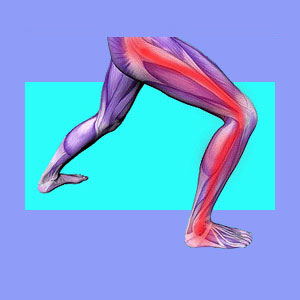
Patients must know that sciatica is not a diagnosis. Sciatica is always a symptom of some causative condition. If your doctor or chiropractor diagnosed you with sciatica, you are already in trouble, since it is abundantly clear that this “healthcare professional” will probably go about trying to treat the symptom, rather than ascertaining and resolving the underlying causative mechanism for the symptom to exist.
We were the very first online community to propose the simple truth that sciatica is never a diagnosis unto itself. We have been propagating this fact for a decade already. However, despite indisputable proof that this statement is 100% correct, we continue to receive correspondence from countless patients who have been “diagnosed with sciatica”. Therefore, we continue to help educate the public about the terrible consequences of this medical travesty and the effects a “diagnosis of sciatica” has on a typical patient.
This essay continues our patient advocacy efforts by warning sciatica sufferers that their symptoms never constitute a diagnostic conclusion unto themselves. Instead, all true and pseudo-sciatica scenarios are sourced from some other diagnosable condition which must be discovered and treated if the patient is to have any hope of ever achieving a cure.
Why Sciatica is Not a Diagnosis
Sciatica is a symptom set. Sciatica is not a diagnosis. It might consist of pain or related neurological effects, including tingling, pins and needles, weakness or numbness in regions of the lower body, such as the buttocks, the legs and/or the feet. Diagnosing sciatica is like diagnosing someone with a fever. Fever is a symptom, not a condition unto itself. Being diagnosed with sciatica is akin to being diagnosed with pain. Pain is a symptom of some underlying causative condition. We think you can easily foresee the many potential problems associated with being labeled with a sciatica diagnosis.
Sciatic nerve symptoms can originate in the spine, which is the definition of true sciatica. These conditions are caused by some issue affecting the L4, L5, S1, S2 and/or S3 nerve roots in the vertebral column. Common causes of spinally-motivated true sciatica include compressive neuropathy and central spinal stenosis problems enacted by herniated discs, osteoarthritic accumulations, scoliosis, atypical lordosis and spondylolisthesis, among other possible explanations, such as ligamentous hypertrophy and ossification and congenitally narrowed central vertebral or neuroforaminal canals.
Additionally, pseudo-sciatica mimics true spinally-motivated symptoms in every respect. However, these expressions are caused by some nonspinal source or a spinal source not residing in the lower back and not affecting the nerve roots that form the sciatic nerve. A common explanation for pseudo-sciatica symptom sets is cervical spinal stenosis in the vertebral column. Nonspinal sources of symptoms include piriformis compression of the fully formed sciatic nerve, sacroiliac joint issues, localized nerve injury, a variety of lower body neuropathies, diabetes, neuromuscular diseases and the least often investigated cause; psychogenic origin using oxygen deprivation to affect the neurological tissues.
All of these causative conditions can be diagnosed and form the basis of a causative theory used to successfully explain why the sciatic symptoms exist. Subsequently, once a diagnosis has been made, a treatment plan can be created to attack the causative source and hopefully resolve the sciatica expression. Skipping ahead to treatment before ascertaining the causative mechanism for pain is tantamount to guessing. Guessing rarely provides satisfying treatment outcomes for any health issue.
Understand that Sciatica is Never a Diagnosis Unto Itself
Most patients receive symptomatic care for sciatica. This means that the treatments utilized only help to reduce the severity of the symptoms, but will do nothing to help end the underlying source of the pain. When sciatica is given as a self-contained diagnosis, the reason for symptomatic care is obvious. Since no diagnosis has been reached, the only possibility to move forward is to treat the symptoms, (the sciatica), and so symptom-based care begins. However, even in many cases where a diagnosis is made to identify an underlying causative process creating the sciatica expressions, symptomatic sciatica care is still rendered. The reasons for this occurrence are diverse and numerous, with many of them involving sinister financial motivations on the part of the care provider.
Spinally-motivated true sciatica should be addressed using methods of treatment that target the sources of neurological compression in the lower vertebral column. Depending on the source of nerve root compression, surgical or nonsurgical tactics may be employed successfully to resolve the source of nerve root dysfunction.
Pseudo-sciatica is often treated conservatively, with very few causative conditions requiring surgical interventions. Cases enacted by the mindbody processes must be treated psychoemotionally, rather than physically, in order to end the causative issues in the subconscious.
Remember, Sciatica is NOT a Diagnosis
We still cringe every time we receive a letter or email from a patient that begins: “I was diagnosed with sciatica…” We hope that this essay helps to clarify that sciatica is never a diagnosis by itself and should never be treated as if it were a primary health condition. Trying to treat sciatica symptoms will virtually never lead to a cure. Instead, patients become snared in a trap of ongoing guess-oriented care that drains their financial resources, wastes their time and provides extremely unsatisfying therapeutic results.
While modern doctors typically hate the diagnostic process, since it is slow, difficult and unprofitable, it is vital that every sciatica sufferer insist that proper evaluation be performed and that an actual diagnosis is made before any therapy begins. This is the only way to possibly enjoy a cure or even to receive effective pain relief from treatment. If your doctor has a problem with this request, they are showing their true monetary motivations and should be fired immediately. Medical science is a competitive business and you can surely find a better caregiver who will actually want to help you by first discovering what is actually wrong before applying potentially dangerous and damaging treatments based on “educated” guesswork.





